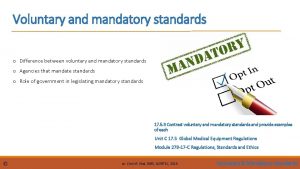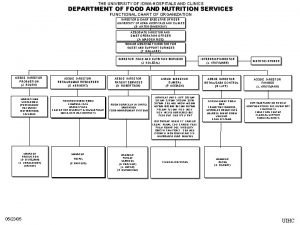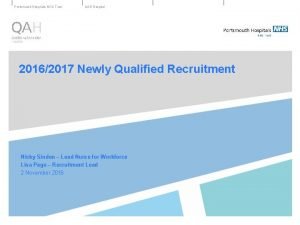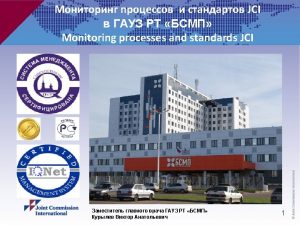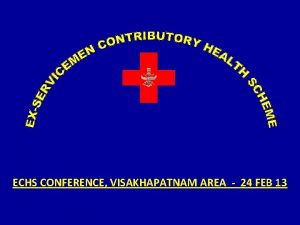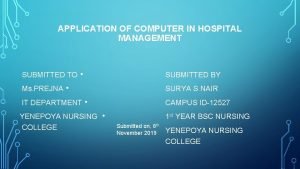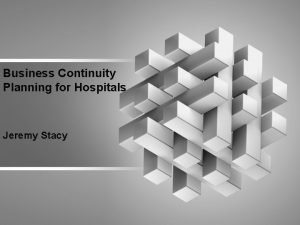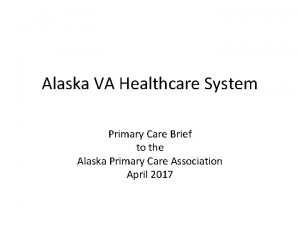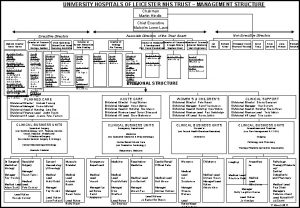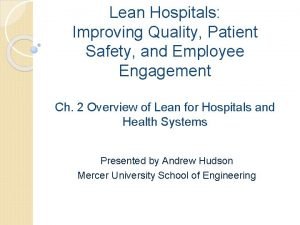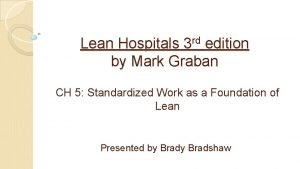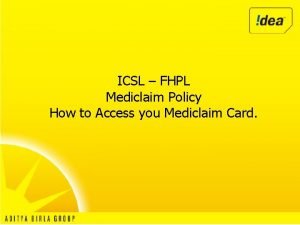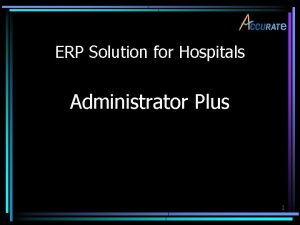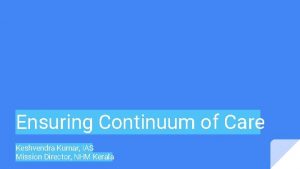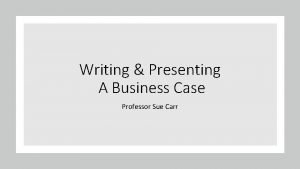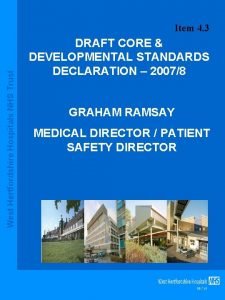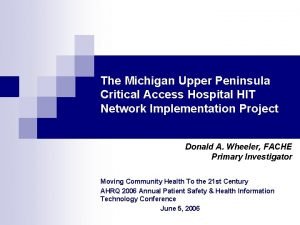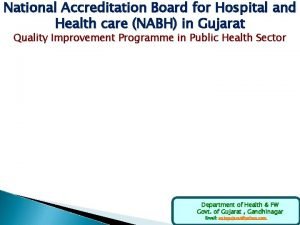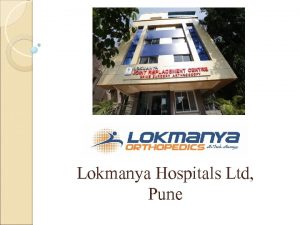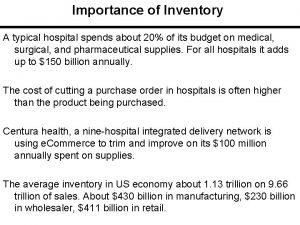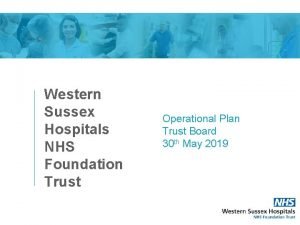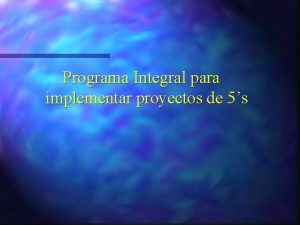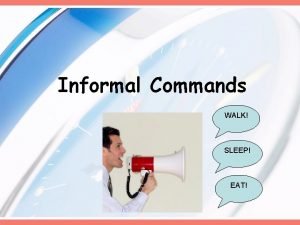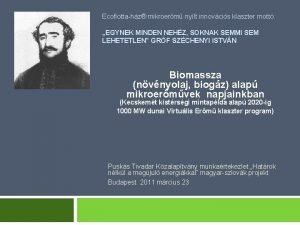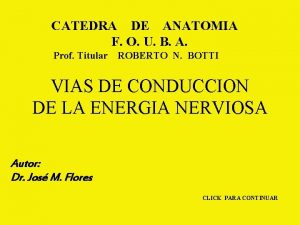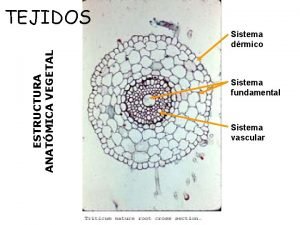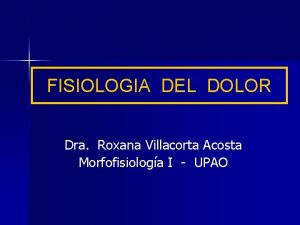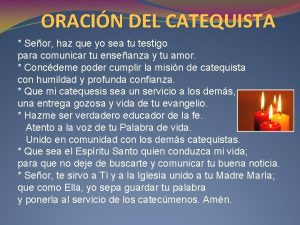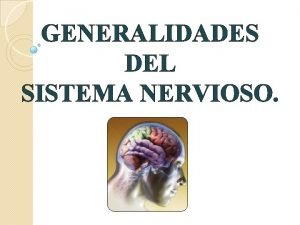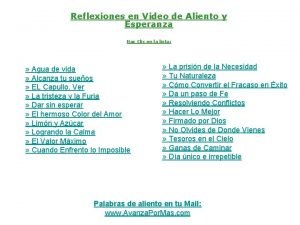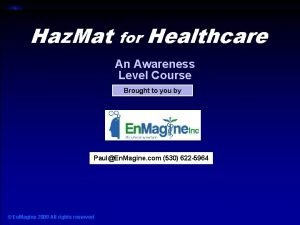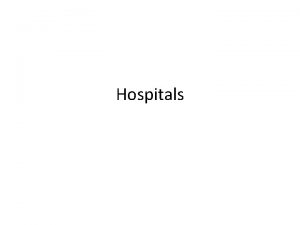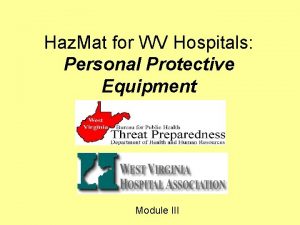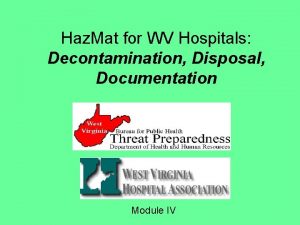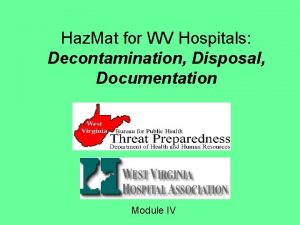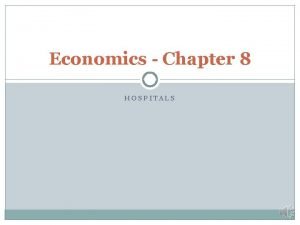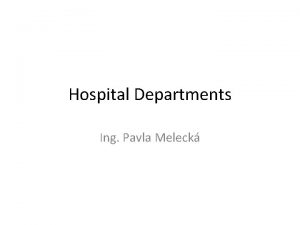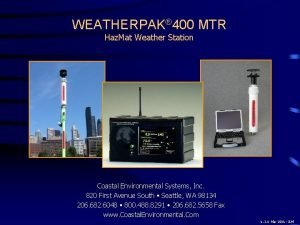Haz Mat for WV Hospitals An Operations Level














































- Slides: 46

Haz. Mat for WV Hospitals: An Operations Level Course Module II 2. 10

This course was developed by En. Magine, who we wish to gratefully acknowledge. The material has been modified by WV DHHR in cooperation with the West Virginia Hospital Association’s Disaster Preparedness Task Force in the teaching of Hospital Decon. 2. 10

Objectives • Describe the purpose and need to implement the Hospital Emergency Incident Command System. • Apply basic hazard and risk assessment techniques to hazardous materials incidents for action planning. • Demonstrate the use of the Department of Transportation Emergency Response Guidebook. • Describe the aspects of control, containment, and confinement within your resources. • Describe protective actions and rescue options available to first responders, within their capabilities and resources. 2. 10

Operations Level Objectives C I A • Command • Identification • Action Plans P C P • Protective Equipment • Containment / Control • Protective Actions D D D • Decon • Disposal • Documentation 2. 10

Command (C) Scene Management System • Purpose of Scene Management (Decon area) – Provide workable system – Efficiently/effectively use resources – Minimize impacts of incident • Hospital Emergency Incident Command System is required under JCAHO. 2. 10

Scene Management System (Decon Area) Goal: Protect – Life – Environment – Property Need one system for all responders 2. 10

What is HEICS? • Hospital Emergency Incident Command System • Organized system – Of roles, responsibilities & procedures • To manage & direct – All emergency operations 2. 10

Benefits of HEICS • More efficient use of resources • More effective management • Safer response 2. 10

Who’s In Charge? • Haz. Mat requires establishing Command early, but… • Common Haz. Mat deficiency is poor management (i. e. Command)! – Early assumption of Command reduces chaos and aids in management 2. 10

HEICS Organization • Command/IC (overall management) – Operations (manages tactical operations) – Planning/Intel (does incident action planning) – Logistics (procures incident resource needs) – Finance/Admin (manages financial aspects) 2. 10

Haz. Mat Group 2. 10

HEICS Haz. Mat Organization • Hazardous Materials Group Positions – – – Decon Group Supervisor Technical Reference Site Access Control Decon Leader Entry Leader Assistant Safety Officer* • *Reports to Safety Officer 2. 10

Job Action Sheets • Guidance for each position with: – Basic information – Mission – Tasks (immediate, intermediate, long-term) 2. 10

How bad is this? • • What do I know? What don’t I know? Quantity and Concentration Characteristics of Hazardous materials – Toxicity – Reactivity – Ignitable/ Flammable – Corrosive 2. 10

How bad is this? • Population at risk to exposure--the ED • Environment at risk— the entire hospital 2. 10

Information Resources • • Container Labels MSDS Poison Control Emergency Response Guide (ERG) Computer programs People Chem. Trek 2. 10

Info Sources • NFPA 704 System – Blue = Health – Red = Flammability – Yellow = Reactivity – No color = special hazards 2. 10

Info Sources DOT Emergency Response Guidebook (ERG) • ERG purpose: – Basic safety tool – Basic identification – Initial actions 2. 10

Info Sources ERG Organization • • • White — Yellow — Blue — Orange — Green — Basic info & instructions UN #, guide # & material name Material name, guide # & UN # Chemical information Isolation & Protective Actions 2. 10

Info Sources ERG—Good But Limited • Classification of hazard • Guides — “most essential guidance” • Isolation/evacuation distances — guides • Use table of placards only if no ID • Intended use 2. 10

Info Sources • People – Patient – Witnesses 2. 10

Acronyms and Terms • TWA - Time Weighted Average – Average concentration that a worker can be exposed to during a 40 hour week/8 hour day without adverse effects. • STEL - Short Term Exposure Limit – Fifteen minute time-weighted average exposure • Ceiling – Instantaneous levels which should not be exceeded 2. 10

Acronyms and Terms • IDLH -Immediately Dangerous to Life & Health – Maximum level from which a worker could escape without any escape impairing symptom or irreversible health effect • PEL - Permissible Exposure Limit – OSHA standards - therefore are legal limits – Based on TLV’s and many are identical – Include 8 hour PEL, 15 minute STEL, and Ceiling Limit 2. 10

Acronyms and Terms • LD/LC 50 – Lethal Dose 50% – Lethal Concentration 50% • PPM/Mg. M 3 – Parts Per Million • measured as volume of contaminant to volume of liquid or air collected in sample – Milligrams Per Cubic Meter • measured as weight of contaminant to volume of air collected in sample 2. 10

Respiratory Arrest Coma Nausea Mental Impairment Euphoria Concentration Understanding Toxicity 101 Time of Exposure Courtesy of Mike Callan <www. mikecallan. com> 2. 10

Toxicity Relationships VX Dangerous Dangerous CO Ammonia H 2 S Chlorine Acrolein Methanol Dangerous Unsafe 25000 Unsafe Safe 1200 Unsafe 200 Methanol Carbon Monoxide Safe 35 Unsafe 300 25 Ammonia 100 10 Un. Safe H 2 S HCL 10 Un. 0. 5 S. Chlorine 5 0. 0001 0. 00001 0. 1 Acrolein VX 2. 10

Acronyms and Terms • UEL and LEL – Upper Explosive/Lower Explosive Limit • FR and FL – Flammable Range/Flammable Limit • FP – Flash Point 2. 10

Routes of Entry into the Body • Inhalation: Breathing it in! • Ingestion: Swallowing it by mouth! • Absorption: Through the skin! • Injection: Puncture! 2. 10

Routes of Entry and Preventing Exposure • Inhalation: Most common route of entry – Isolate and deny entry – Wear air supplied respirator (SCBA or airline respirator) if unsure of what it is or how much is there – Just stay away! 2. 10

Preventing Exposure • Isolate and deny entry • Don’t eat, drink, smoke around contaminated areas • Wear proper PPE • Engineering controls 2. 10

Remember! • Many hazmats are odorless, colorless and tasteless! • You may be exposed before you know it! • Wear PPE • Approach safely - UUU Above/ Upgrade Up Hill Different Ventilation Up Wind Out of flow Up Stream 2. 10

Acute vs. Chronic • Exposure – Acute: short-term, limited, one time – Chronic: long-term, repeated, continuous • Effects – Acute: may not show immediately – Chronic: not detectable for years. May differ from acute effects 2. 10

Action Planning • Components of action plans – ID the problem – ID resources available – Use available resources to solve problem 2. 10

Action Planning Capabilities & Resources • • Personnel Equipment Policies/Procedures Facilities 2. 10

Site Safety Plan • Required and necessary for a safe and effective response – Decon area – Route of entry – Adequate vehicle access • Much of the information should be preplanned 2. 10

Containment and Control (C) Hazmat Counter measures 2. 10

Eventual Outcome • All Haz. Mat Incidents Eventually Stabilize – Actions by responders should contribute to the solution, not the problem! 2. 10

When Not to Intervene • Action would be unsafe • Lack of response resources • Lack of proper PPE 2. 10

Why Non-Intervention? • Responders are there to save, not risk lives! • Any level of responder can follow this strategy 2. 10

Decon • Dilute it! • Remove it! 2. 10

Can we handle this Incident? 2. 10

Our Roles • What can I do as a: – First Responder Awareness: Understand hazardous materials – First Responder Operations: Conduct decon – Technician Level: Contain releases, clean up the hazmat spill • What can my hospital do: – Hospital’s role 2. 10

Standard Operating Procedures • Policies and Procedures • Safety Manual • Disaster (Emergency Preparedness) Plan – Example: Management of the Contaminated Patient • What happens if you need to deviate from the plan? – Be flexible 2. 10

Watch Closely 2. 10

Module II Ops Summary • Understand HEICS • Understand available resources – ERG • • Terminology: LD 50, PPM, FP Routes of exposure and Preventing Entry When to intervene Various roles 2. 10

Questions? 2. 10
 Mat för idrottare
Mat för idrottare Mandatory standards examples
Mandatory standards examples University of iowa hospital and clinics departments
University of iowa hospital and clinics departments Qah
Qah Louisiana health standards
Louisiana health standards Ipsg 1-6
Ipsg 1-6 Echs visakhapatnam
Echs visakhapatnam Uses of computer in the hospital
Uses of computer in the hospital Dnv vs joint commission
Dnv vs joint commission Bcp for hospitals
Bcp for hospitals Anchorage va medical center
Anchorage va medical center Uhcw floor plan
Uhcw floor plan Simon sheppard nhs birmingham
Simon sheppard nhs birmingham Hospital strengths and weaknesses
Hospital strengths and weaknesses Lean hospitals
Lean hospitals Lean hospitals mark graban
Lean hospitals mark graban Fhpl network hospitals in hyderabad
Fhpl network hospitals in hyderabad Administrator plus hospital software
Administrator plus hospital software Keshvendra kumar ias
Keshvendra kumar ias Dr sue carr
Dr sue carr Bed management in hospitals
Bed management in hospitals Upper peninsula hospitals
Upper peninsula hospitals Portsmouth hospitals nhs trust jobs
Portsmouth hospitals nhs trust jobs National accreditation board for hospitals
National accreditation board for hospitals Lokmanya tilak hospital chinchwad
Lokmanya tilak hospital chinchwad Inventory cycle time
Inventory cycle time Western sussex hospitals nhs foundation trust board
Western sussex hospitals nhs foundation trust board Haz geniculado corticonuclear
Haz geniculado corticonuclear Mandatos en espanol
Mandatos en espanol Proyectos de 5s
Proyectos de 5s Sleep command spanish
Sleep command spanish Vin di sal haz ten ve pon se
Vin di sal haz ten ve pon se Positive commands in spanish
Positive commands in spanish Lavar command
Lavar command Haz una lista de los trabajos que realiza ildara
Haz una lista de los trabajos que realiza ildara Görsel haz ve anlatı sineması
Görsel haz ve anlatı sineması Di lo que haces haz lo que dices y demuéstralo
Di lo que haces haz lo que dices y demuéstralo Ház terv
Ház terv Haz de gowers
Haz de gowers Marcha hicopoda
Marcha hicopoda Atactostela
Atactostela Haz neoespinotalamico
Haz neoespinotalamico Yaratma olarak sanat temsilcileri
Yaratma olarak sanat temsilcileri Oracion del catequista señor haz que yo sea tu testigo
Oracion del catequista señor haz que yo sea tu testigo Mapa conceptual del sistema nervioso
Mapa conceptual del sistema nervioso �zge�mi? haz?rlama
�zge�mi? haz?rlama Haz de esperanza
Haz de esperanza

